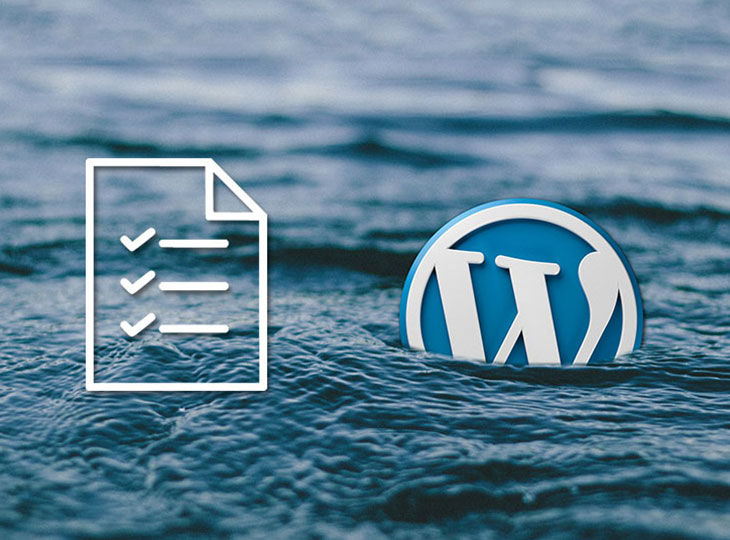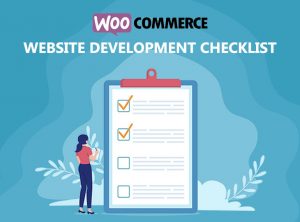
WordPress website Pre and Post Go Live checklist
Preparing checklists is something we all do when we prepare ourselves for tasks such as shopping and traveling. We do that because checklists help us navigate through challenging tasks effectively. Similarly, a website launch is critical for you, and you can easily miss out on essential steps when you are ready to launch.
To help you avoid the mistakes that we’ve learned from over the years, Simple Intelligent Systems has prepared a checklist that will guide you through an effective WordPress website launch.
Pre Go-Live checklist –
- Have an excellent hosting Plan
- Check the design of your homepage.
- Check code quality of your theme
- custom favicons for brand identity.
- Design a custom 404 page
- Add customer forum and Q&A
- Add a Retina Logo
- Check H1 heading, Image Alt and Internal & External Links
- Check Grammar and Spelling
- Replace the Dummy Content
- Check all Forms on the Website
Have an excellent hosting Plan
Hosting is a crucial aspect of every successful website. Choosing an appropriate host for your website can help you improve your SEO and boost your sales. You need to make sure before launching your website that your server host endorses your site and renders the latest version of PHP and WordPress auto-installer. A more managed hosting plan is advisable such as WP Engine. A hosting plan should provide the following:
- Good speed
- A lot of server space for all your sites
- An excellent support team
Check the design of your homepage
Remember …” the first impression lasts for a lifetime!” Having a lousy homepage is like selling a car with damaged windscreen, worn-out paint, and missing tire. Your homepage is the first page visited by your prospective clients. You need to check your homepage for the following :
- White spaces
- Color schemes
- Layout
- Content
From amongst the attributes mentioned above, Content is the most critical as people will stop engaging with your site if the Content is not pretty and can engage their attention.
Check code quality of your theme
Vulnerabilities in the quality of the code of WordPress theme may adversely impact the safety, security, and reliability of your system and website. A good code should have the following attributes:
- The code of the themes should comply with WordPress coding standards.
- The code should not risk the security of the sites running the themes.
- The code should enhance the performance of the site.
- The code should be maintainable easily
- The code should not carry unnecessary bloat.
- It should be easy to test the code.
- WordPress API functions, classes, and hooks should be correctly incorporated.
Custom favicons for Brand Identity
Favicons are the little images or one to three characters of text that serve as branding for your site. Creating a Favicon is a minor yet essential step to setting up a website for your business. It adds an element of trust in your website by adding a legitimacy to your site. They indirectly impact your SEO and help improve your website rankings.
You should incorporate a Favicon having the following attributes:
- Uses space wisely, is a smaller version of your company logo and reflects your brand uniquely.
- Favicons should be simple
- Should have contrasting colors as it is easier for human eyes.
- Favicons should be preferably square-sized for the best results.
Design a custom 404 page
Every website has a 404 page, but not all sites customize it. Whenever the server is unable to find a specific page, a 404 page is displayed. One good thing about creating a custom 404 page is that they carry the atmosphere of the brand forward even when something goes wrong with a particular page of your website. So custom 404 pages help in your branding and should form an essential part of your site.
Add customer forum and Q&A
Ensure that your WordPress site has a customer forum. Discussion Board is a WordPress Forum plugin that allows you to add a customer forum to your site. An online forum is similar to a message board where customers can converse through the exchange of messages.
Customer forums serve the following purposes:
- Provide great customer service
- Forums are a great way to develop trust and loyalty in your brand.
- They serve as a valuable source of customer feedback.
- Forums help in improving SEO.
Add a Retina friendly logo
Retina friendly images or logos imply rendering smoother fonts and more crisp images.
An increased number of visitors view websites on high-resolution screens, and when websites serve images that have low resolution, meant for regular screens, these images will not look good. Either use a logo in SVG format or use a retina version of the logo.
Check H1 heading, Image Alt and Internal & External Links
Your heading tags bear much significance from the SEO perspective. Hence check your tags before launching your site. They should contain relevant keywords and should be suggestive of what follows on the webpage.
Alt Text should be in place. This is the text that substitutes an image that fails to load.
Similarly, Internal and external links should be in order. The former are hyperlinks that direct a visitor to your site, whereas the latter directs the reader to another page that holds significant value.
Check Grammar and Spelling
Grammar is the groundwork for effective communication. Improper Grammar and spellings can convey the wrong message. This is particularly important for businesses where you have to sell products to your customers. So, check your WordPress site for such errors before launching.
Proper Grammar makes your Content more readable and exciting.
Some useful tools are:
Replace the Dummy Content
You often come across Dummy Content or data as a WordPress Developer. This text is required whenever you have to test a new feature of WordPress, a new theme, or a plugin. Dummy data also comes with each WordPress installation, such as Hello World, Sample page, and your First post.
Before launching your website, check to see if you have cleared all such data from the pages.
Check all Forms on the Website
Check all forms for accessibility, usability, and security. Test your forms on mobile devices, iPad, and iPhone. If you have form elements such as checkboxes and radio buttons, make sure you can press them quickly. Remember, if you get irritated testing your forms, users, too, will share the same experience when they fill in the form.
Post Go Live checklist –
- Harden the Security.
- Configure an SEO Plugin.
- Optimize Permalinks for SEO
- Create an XML Sitemap
- Check All Emails Are Correctly Used
- Protect Website Against Spam.
- SSL Certificate for the Website
- Allow Search Engine Indexing
- Add Google Analytics Code.
- Set up Google Webmaster Tools
- Check Performance
- Run a Mobile-Friendly Test
- Submit Website to Google
- Setup Google Search Console
- Weekly backup.
Harden the Security.
The famous CMS powers 28 % of all sites on the internet. Hence you have to take specific measures to prevent your site from falling victim to malicious behavior. You need to be proactive against potential attacks
There are numerous tools and plugins in your quiver to guard your site from hackers. Some of these are:
Configure an SEO Plugin
When you have launched your website, your site is competing with millions of other similar sites who are in the same business as you. SEO helps you do the same things as your competitors but in an improved and search engine friendly manner. Hence with proper SEO, you will prevent your site from being lost in the crowd. It will embellish your site with all the necessary attributes that will make it outshine other similar sites.
Plugins like Yoast SEO will empower your site and send thousands of visitors to your website.
Optimize Permalinks for SEO
The URL’s of the Content you publish on your WordPress website are known as Permalinks. They are essential because search engines use them to link to websites. You can alter the structure of your Permalinks at any time. WordPress displays five custom permalink structures. WordPress automatically enables the plain Permalink structure after installing WordPress, which is not user friendly. The rest of the four permalink structures offered by WordPress are SEO friendly. It is better to refer a visitor to a URL that can be memorized easily.
Create an XML Sitemap
An XML sitemap is a text file which carries details of all the URLs on a site. They may also contain information such as when they were last updated, metadata on the URL, their level of importance, and whether versions of the URL in other languages are also available. This information allows Search Engines to crawl websites easily.
Although creating a sitemap does not guarantee that your site will be crawled and indexed by the search engines, they make navigation easy, especially when no internal links are linking all the pages.
So make sure you have a site map ready and submit it to Google.
Check All Emails Are Correctly Used
Check all email addresses, admin ids, and plugin settings. Any errors can be rectified in Settings>General. Email addresses can be corrected at any time, but you will miss out on the traffic that could have been received in your inbox, in the meanwhile. So scan all the email addresses so that you do not miss out on business opportunities.
Protect Website Against Spam
Comment spam is inevitable for websites. You will encounter spammers if you choose to enable comments on your site. Spam affects your website in the following ways:
- Legitimate visitors may find it challenging to have conversations when your comment section is filled with spam messages.
- Spam makes your website look unprofessional.
- Spam may contain malicious links, hampering your reputation.
WordPress helps you fortify your defenses by offering anti-spam plugins. Antispam Bee and Anti-spam are free plugins and help eliminate spam efficiently.
SSL Certificate for the Website
SSL certificates are critical for the authenticity of of your website. They provide an encrypted channel of communication between the client and the server for exchanging confidential information. These Socket Layer certificates are considered mandatory by search engines. A site without the certificate is flagged as insecure by search engines. So, test your SSL certificate to be in place.
Allow Search Engine Indexing
When you are developing your WordPress site, on a publicly accessible domain name, then you often turn off your indexing, because you don’t want GOOgle to index your page that is under maintenance or construction. But when you are launching your site, you certainly would want Google to crawl your site and index it. So don’t forget to turn on your indexing, before you launch your site.
Visit Dashboard>Settings>Reading and uncheck “Discourage search engines from indexing this site.”
Add Google Analytics Code.
Google Analytics is a powerful tool that should be used by all websites. Once you launch your site or start a blog, your ultimate goal is to attract more and more traffic. Google Analytics helps you arrive at data-driven decisions. You can monitor the following data with the help of Google Analytics:
- Who visits your website?
- What do people do when they are on your website?
- When do people visit your website?
- How do people find your website?
- How do people interact with your Content?
Install Google Analytics as soon as you go live on your domain.
Set up Google Webmaster Tools
Google Webmaster Tools, formerly known as Google Search Console, is a free tool from Google. It enables Webmasters to have a clear picture of how their website is doing in search engine results. Link your site to the Google Analytics account to view your site’s following performance data:
- The number of times your website has appeared in organic search results (impressions)
- The number of times your visitors have clicked on your site in organic search results (clicks)
- The average percentage that an impression got converted into a click (average click-through rate)
- The average rank of your site in search results for all keywords (average position)
- Website’s coverage
- Website security, enhancements, and manual actions.
You need first to set up the Google Search Console. Then you can add Google Search Console to your website either manually or by using the Yoast SEO plugin.
Check Performance
Website speed is becoming increasingly important with the influx of sites on the internet. The faster your site is, the happier is your audience!. This is so because:
- Faster sites are more user-friendly.
- Faster sites are more mobile-friendly.
- Faster sites have a better ranking on Google.
- Faster sites can offer a better conversion rate.
To achieve good website speed, you can do the following;
- Add a caching plugin such as Super Cache, W3 Total Cache, WP Fastest Cache, or WP Rocket.
- Select an excellent hosting service.
- Install CDN’s
- Enable lazy loading.
- Optimize your images.
Run a Mobile-Friendly Test
Mobile-friendliness is an essential ranking factor on Search engines. Today more than one-third of communication over the internet happens via tablet, mobile phones, and other devices. In the USA, mobile phones account for more than half the digital consumption. As the owner of a WordPress site, you need to optimize your site for mobile use. This task involves a great deal of testing.
Check your mobile phone visibility by running your website through Google’s mobile-friendly test. You cannot overlook this test.
Further, if you have created Accelerated Mobile Pages, you’ll have to adjust your URLs accordingly.
Submit Website to Google
Once you’ve completed your site and ready to launch, you would want to submit your site to GOOgle. This is simple.
- Search ‘Submit URL to Google,’ and you’ll get this an input box.
- Add the full URL of your website.
- Click Submit.
- You should be listed on Google in a few days.
Setup Google Search Console
You want your site to be visible to the world after having launched it.
Google Search Console submits your sitemap directly to Google. It also updates you about security issues related to your site.
It also furnishes critical information, such as:
- How your website appears in Google?
- Which pages are indexed?
- The search terms used by people to locate your website
- Your keyword rankings.
So you need to set up your Google Search Console once you are ready to launch your site.
Setup Website Backups
If you’re building the site on a staging environment or localhost, you must move the database to the live server cleanly. You should have a backup of your website before you attempt to move it to avoid mishaps. Check that the new website makes use of the live URLs in all the right places.
You can use a Backup Buddy plugin for backup. It helps to back up your website, and can effectively restore and migrate your WordPress website.
Conclusion:
We hope our checklist proves fruitful to you in the process of launching your website successfully to the world. Following all the above points will help you foster your progress through a well structured, engaging website that is ready to be crawled by search engines and shared across the web. In case of further assistance, Simple Intelligent Systems will be pleased to lend a helping hand.

















